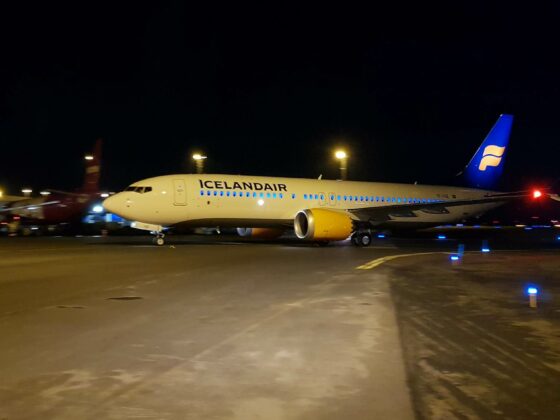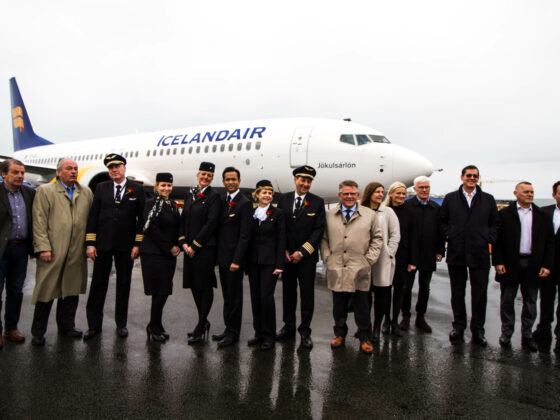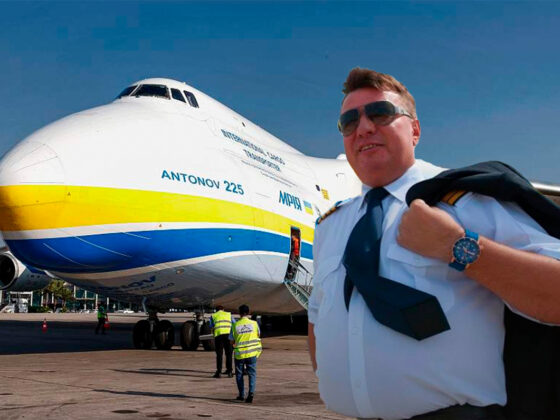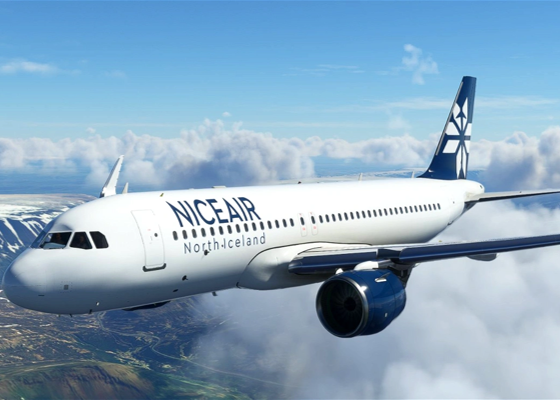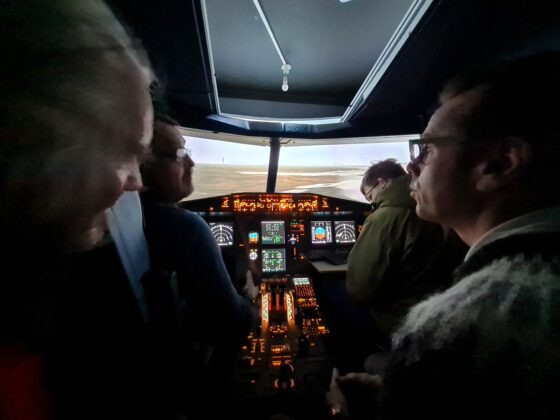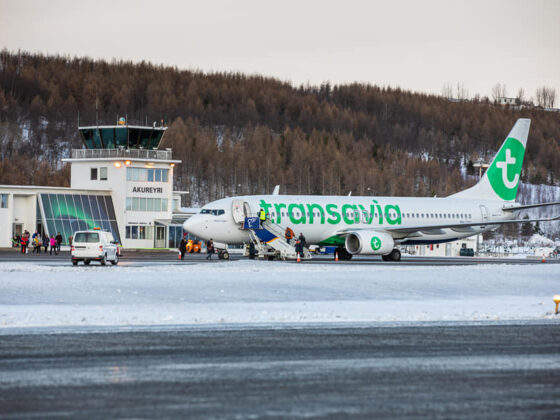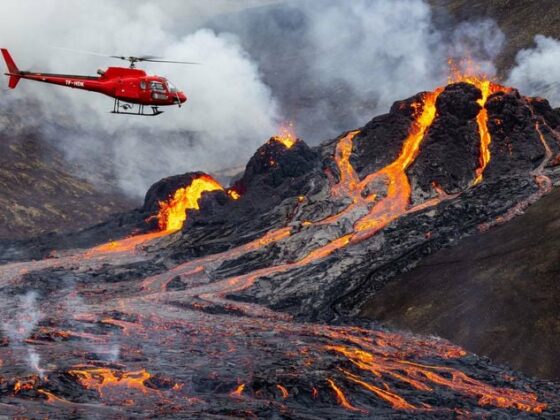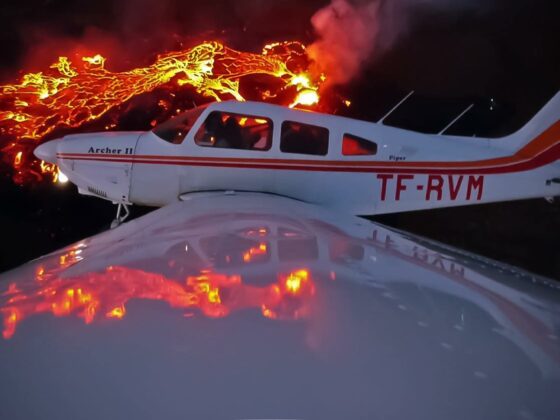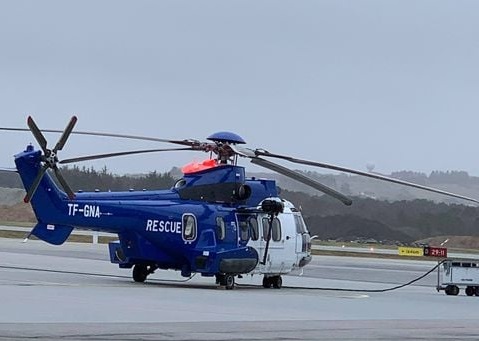In harsh weather conditions and any time of day or night, they fly via “dark routes” with names of Scandinavian gods on their aircraft to save lives. Their assistance requested not only in Iceland or nearby ocean but even on the southern borders of Europe. Flugblogger got on board of aviation department of the only Icelandic organization, which combines search, rescue and some explosive duties. Their budget is tight, the climate is severe, helicopters wait to be upgraded, but in most of the situations, they are the only in Iceland, who can bring help from above.
The text is approved by
Icelandic Coast Guard
Red Alert
“Seems you are not flying with us today”, the phrase Flugblogger heard during the first attempt to join training flight of Icelandic Coast Guard (ICG). Minutes before the departure the crew received an emergency call with code “Alpha”. They still were waiting for confirmation from a paramedic, who was on the way to the road accident site, but the preparation for rescue operation has begun already. “Sh-sh!”, it was impossible for a regular person to understand the noise from the crew’s portable radio, but navigator got everything and started to put coordinates on operations board. Captain and first officer have found the place on Google map: “Must be this part of the Circle road, over there”.
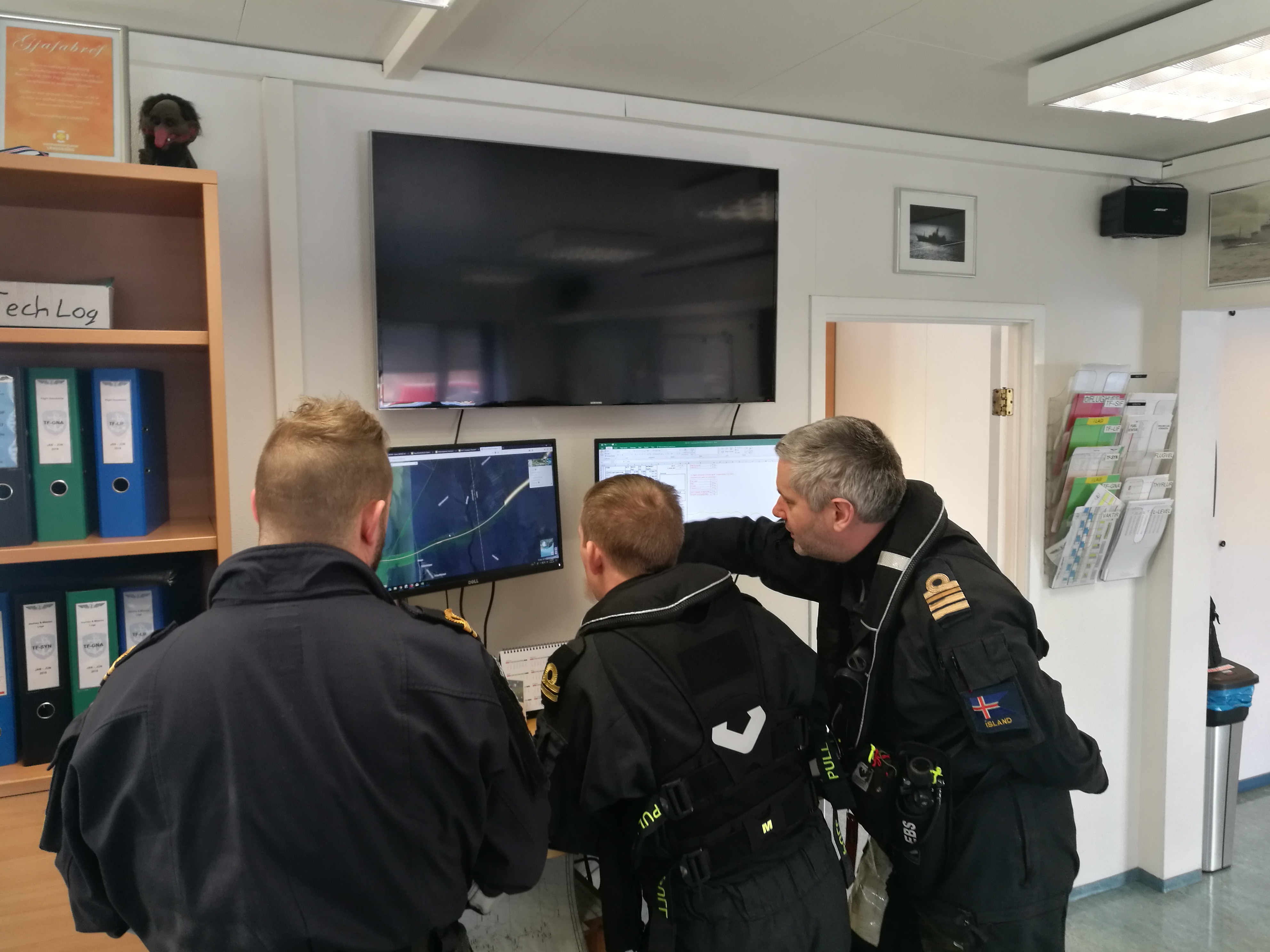
“Sh-sh!” said portable radio and navigator put on the board weather conditions for the area of a road accident. It was clear and bright, not very often weather in Iceland. “Sh!”, the final message from the radio. “Alright, the paramedic is there and he requests our assistance”, after captains word all team went to the helicopter. They took off less than five minutes after and flew to the south of Iceland.
Emergency calls
Aviation department of Icelandic Coast Guard (in Icelandic “Landhelgisgæsla Íslands”) has hundreds of emergency calls like this each year, and the tendency is growing. It was only 155 calls for urgent assistance in 2011, then 195 in 2013, and finally 257 in 2017. “Last year we flew almost every day”, ICG Chief of operations Ásgrímur L. Ásgrímsson told to Flugblogger, emphasize he counts not only emergency calls.
There are several categories for any call. From most to less urgent, there are “Alpha”, “Bravo”, “Charlie” and then “Delta”. “Delta” is very seldom used,” told Ásgrímur L. Ásgrímsson, “It could be transport something or somebody, but not any type of emergency. For example, escort flight with scientists to a glacier or something like that. Also, it could be what we call “a work flight”, when we can use a helicopter to move, for example, a mast”.
Then “Charlie” is more important, as it already relates to somebody’s life, but does not request immediate action. Ásgrímsson explained with a real-life example: “There is somebody has been lost since yesterday. We just let to crew know that when it will start the bright outside they need to be at Selfoss and be ready to search for the police”.
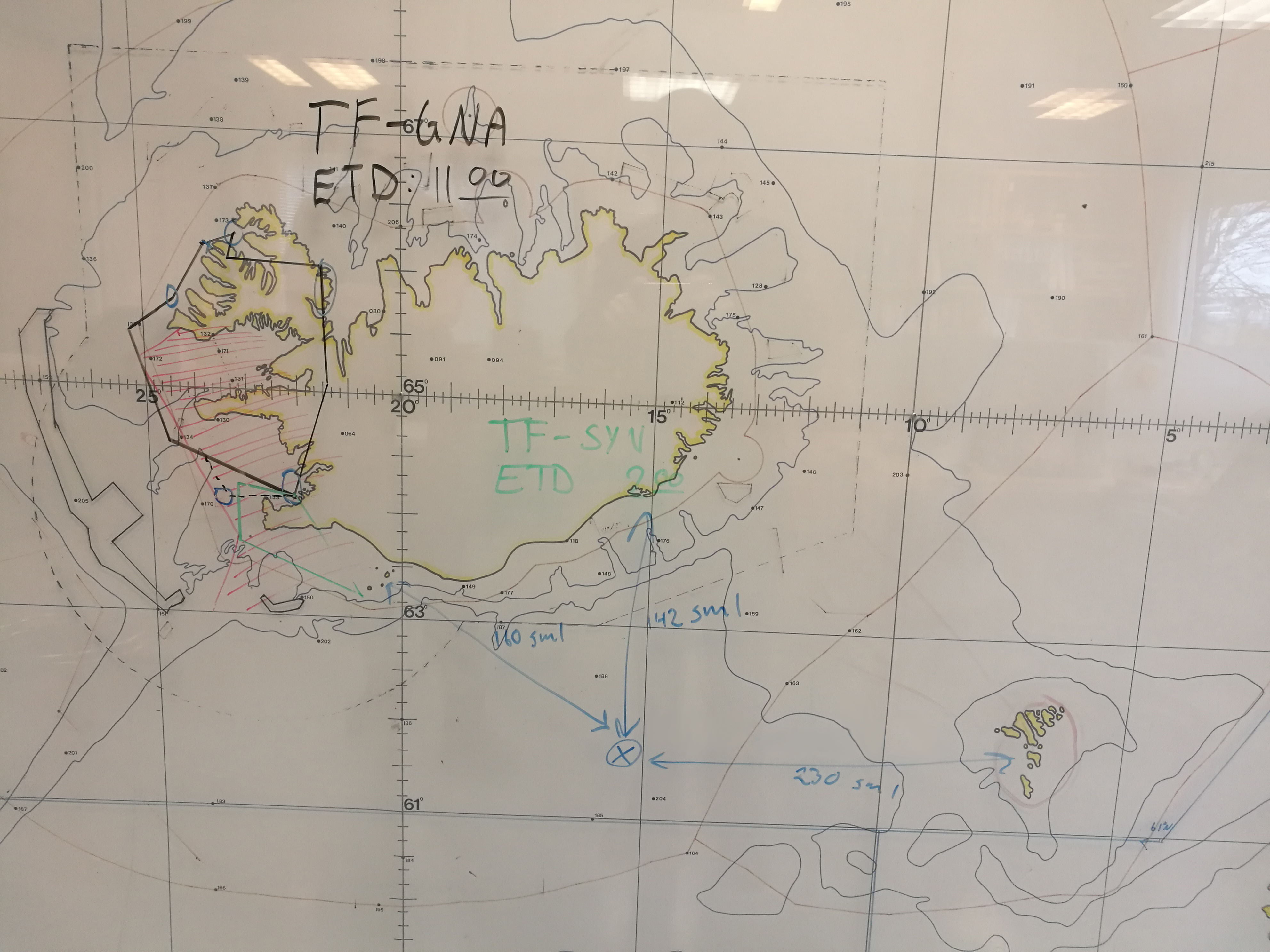
“Bravo” call means somebody needs urgent help, but the person is far from ICG air station in Reykjavik. It can be a life-threatening situation, but the helicopter needs several hours just to fly from the capital area to the accident site. “We will probably use “Bravo”, even there is a very sick person or a car accident on the east coast”, Ásgrímur L. Ásgrímsson said, “Because, by the time you make it to the east coast, there definitely will be 2 or 2,5 hours. Then minutes really do not matter. The helicopter will have a long distance to cover and might crawl around the weather”.
– Who you gonna call?
– Landhelgisgæsla!
Finally, “Alpha” is what goes in statistic as “emergency calls”. The same situation, which is a reason for “Bravo” if it happens on the east coast, goes as “Alpha” on the west and south parts of the island. “If it would happen in Hvalfjörður or Borgarfjörður then we might call it “Alfa”, said Ásgrímsson, “Because it is within half of the hour flight time, and then when minutes start to count”.
He added that “the number of priority calls increased” means there are more serious injuries happened within 1-hour flight time radius. According to open sources, a cruise speed of ICG helicopters Aérospatiale AS.332L1 (H215 in modern Airbus classification) is 245 km/h. Therefore, rough counting, “Alpha” code works for an area within 245 kilometres radius from Reykjavik airport (BIRK).
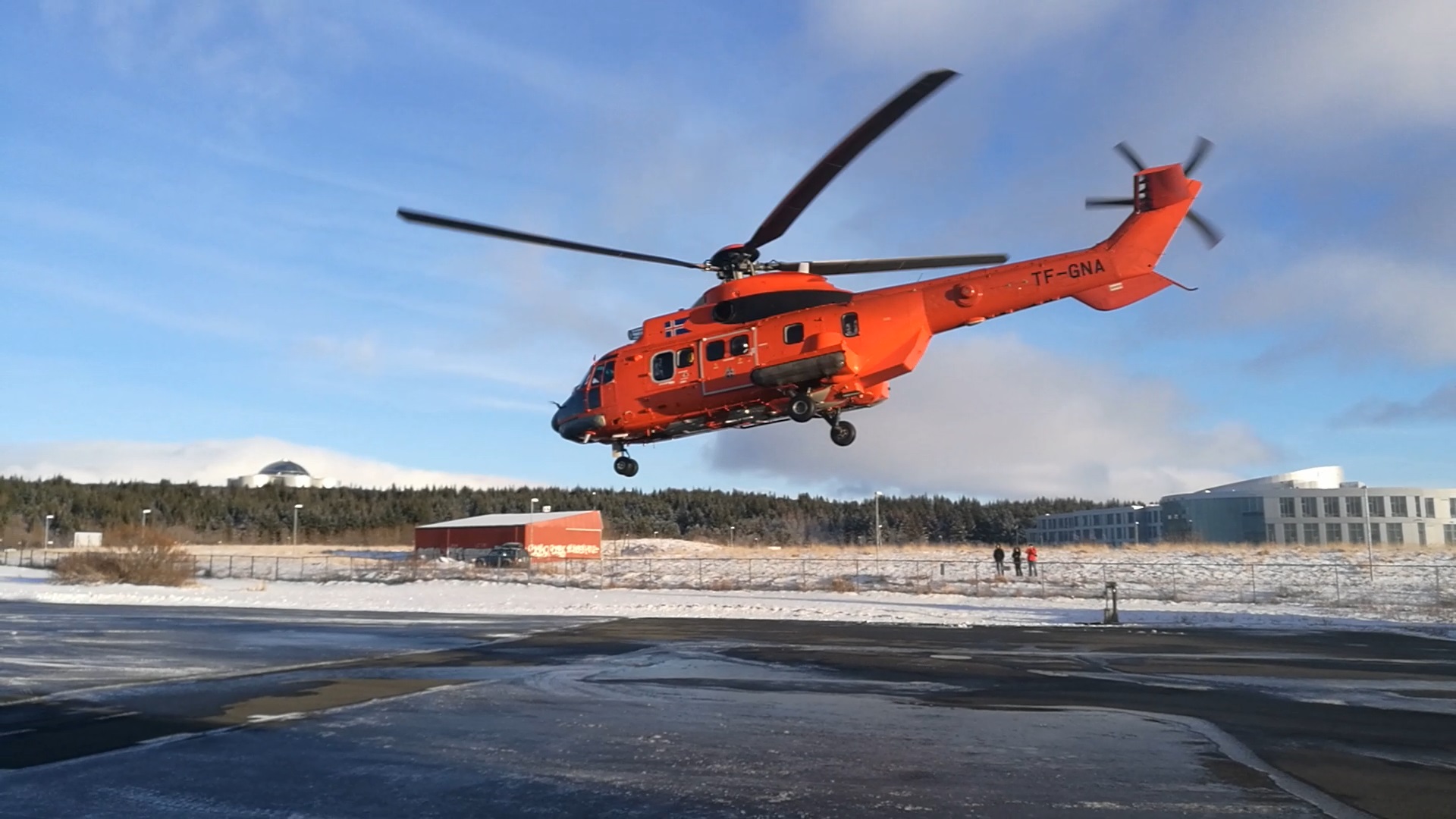
It is especially important, when “Alpha” scrambles, to depart as fast as it is possible. However, the thing is, the crew not waiting the whole shift sitting near the helicopter. “When “Alpha” scramble, a crew could be not on the base. Let’s say at night they can be home, but then must be within 15 minutes driving to the base”, Ásgrímur L. Ásgrímsson explained the situation, “If it is “Alpha” scramble, it means they get in a car, and they drive as fast a speed limit. They might cross an intersection when it is a yellow light. I am not going to say when it is red but yellow. Our Operation centre even can request police escort for them if there is a traffic jam. But it is very seldom used.”
There is a special order on the base too. Instead of doing a pre-flight briefing, as it would be with any other call including “Bravo”, with “Alpha” crew do everything for the urgent departure. “Pilot jumps into an aircraft and starts getting it ready. They start to brief when they start the engines and after take-off,” Ásgrímsson said.
Don’t panic, prioritize
It was like this in December of 2017, when a bus with tourists accidentally left the icy road and turned over. Dozens of injured people needed to be urgently delivered to Reykjavik hospitals. First time in the history of ICG aviation department all three helicopters were busy in the rescue operation.
“Actually was only one time before when all three were called”, Ásgrímur remembers, “There was the emergency call from the foreign plane, which was going to land in Keflavik. All forces came there and waited until its land”.
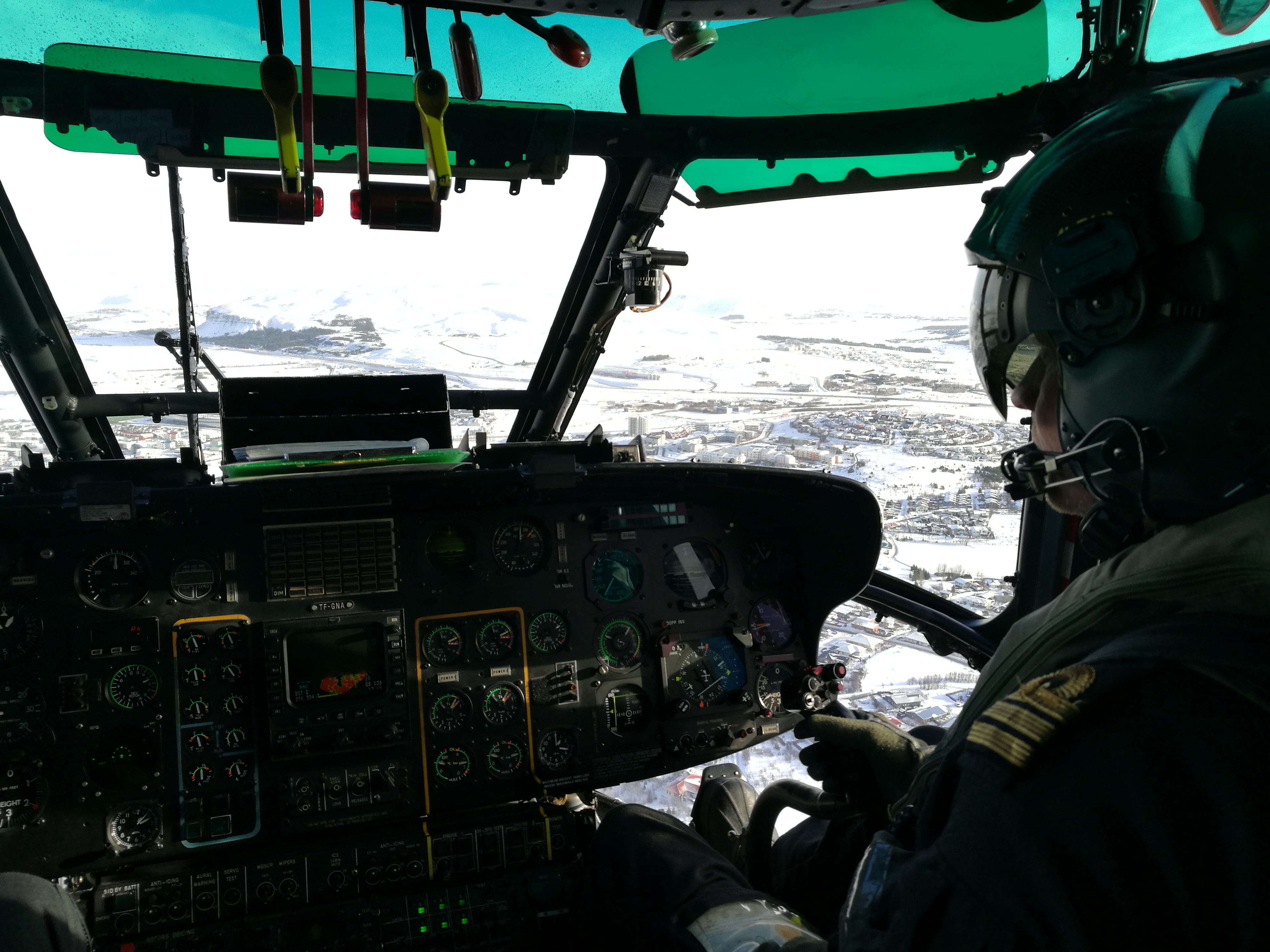
But that time no help was required, different from the accident with the bus. All helicopters were flying in shuttle mode between the crash site and Reykjavik when another emergency call was received. A boat with many passengers run aground in Breiðafjörður. One of three helicopters, which was operating in the rescue of bus passengers, delivered its patients to a hospital, from there went for a hot refuelling in ICG air station, and after head towards the boat.
“It is like everything we do. We have to prioritize and try to focus on the next step”, Ásgrímur explained his philosophy, “We always start with a small amount of information. We should not panic, because of this little amount. Little by little we start to get more and more information and start to see the big picture. Then I realize what my options are. For example, with that bus accident and boat. If some people go into the sea, they can live only minutes. That is why we took one of the helicopters for that operation. Because that was most important, that was number one.”
Sometimes a very special call incoming, as it was in 2011. Lithuanian vessel was travelling from Europe to the USA and was empty. Meeting heavy storm several dozens of miles to the south from Iceland the container ship turned into “small boat” in the middle of the Atlantic ocean. It sways in the waves, making the crew’s life especially difficult at the moment. One of the sailors was unlucky enough to break his arm during such bumpy travel. The only, who could transport him to a hospital, was Icelandic coast guard. It was the big distance from the coastline, so two helicopters were sent to look after each other during the mission. While one of them was evacuating the injured person, a crew from another managed to shoot a video of the process. The video frames became viral in social networks. However, people did not know a coast guard of what country performed the job. Somebody said it was Americans, other – British. Here you can watch the whole story and learn the origins of the video.
Money speaks
ICG would cover a bigger territory of Iceland with “Alpha” code if they would have another air station in a different part of the island. The only reason why they cannot – tight budget. “That will cost a bit more money, that we don’t have”, Ásgrímur Ásgrímsson said, “Because, first of all, we need to have facilities. Hangar needs to be built or rented. We would need to have a double set of tools, to increase the amount of mechanics and aircrews, etc. So, it would be quite more expensive than we have today. We just don’t have that budget”.
ICG Chief of operations says if compare ICG budget before the crisis in 2009 and nowadays, it is easy to see they are lacking. Meanwhile, according to Icelandic Coast Guard HQ data, the 2018 turnover for the Icelandic Coast Guard (excluding security and defence) is expected to be around ISK 4.3 billion. “59% of the budget (~2.5 bln ISK) is allocated to our aviation department. Better use 2005 for comparison as it is the last year when the Icelandic Defence Force was based here with its SAR helicopter squad. In 2005, around 37% of the budget was allocated to the aviation department”, their message says.
“We have never so much as we have back then. Of course, we are getting more in kronas, but things are more expensive. It has not been adjusted to inflation”, Ásgrímsson explained. “Probably the main difficulty is we are lacking one or two helicopter crews, which is of course, because of lack of budget”.
According to ICG safety rules, two helicopters and two crews are required to cover an area more than 20 nautical miles offshore out to 150 nautical miles. The second helicopter has to be at least on standby at the base but in some cases, it will follow the primary helicopter. This is in case something goes wrong with the primary helicopter and the crew needs an assistant. To go beyond 150 nautical miles the ICG fixed-wing aircraft is required for the top cover, find a way around weather and communication.
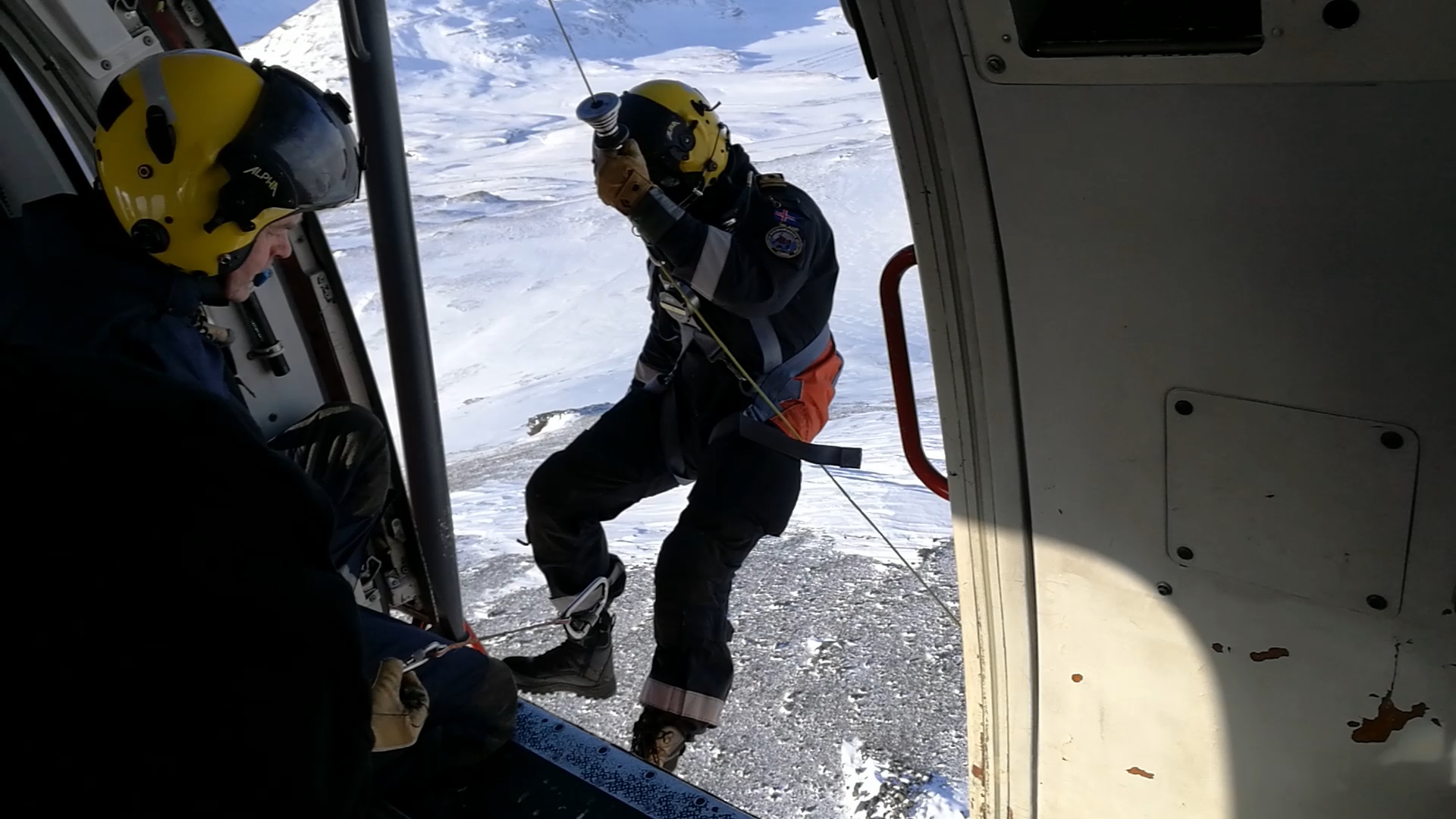
“Currently we only have two crews available about 50% of the time. It does not mean we cannot send two helicopters, but it could not be guaranteed. For second crew we are missing sometimes one pilot, or rescue man, or hoist operator. Usually not more than one or two people”, Ásgrímsson said.
The ground crew is not enough too. “When there is no inspection and everything is working then we have enough of them”, said Ásgrímur, “But when we have one helicopter for major maintenance or big inspection, and second helicopter brakes down unexpectedly, then we are just lacking. We have enough mechanics on a normal day, but when things really start going wrong we could need more”.
Responsible for the nation
Existing budget is supposed to be enough for all responsibilities, which go much far than just search and rescue service. There are many environmental duties, where Icelandic Coast Guard has to patrol ocean territory near the island. They look for persons, who fishing illegally, who dumping oil or dropping unwanted fish. There is border control duty, where ICG has to prevent sneak into Iceland in any point of 4800 km coastline. Moreover, not only people try to reach the island.
“There is also EOD (Explosive Ordnance Disposal) duty, mainly because of World War II sea mines, which still go to the coast. Another danger, fishing vessels catch mines and depth charges from World War II. We have at least ten of them each year. But EOD department doesn’t more because when we have foreign fighters in Keflavik, they serve them for ammunition and store the weapons etc. They quite busy, they have a lot to do”, Ásgrímsson said.
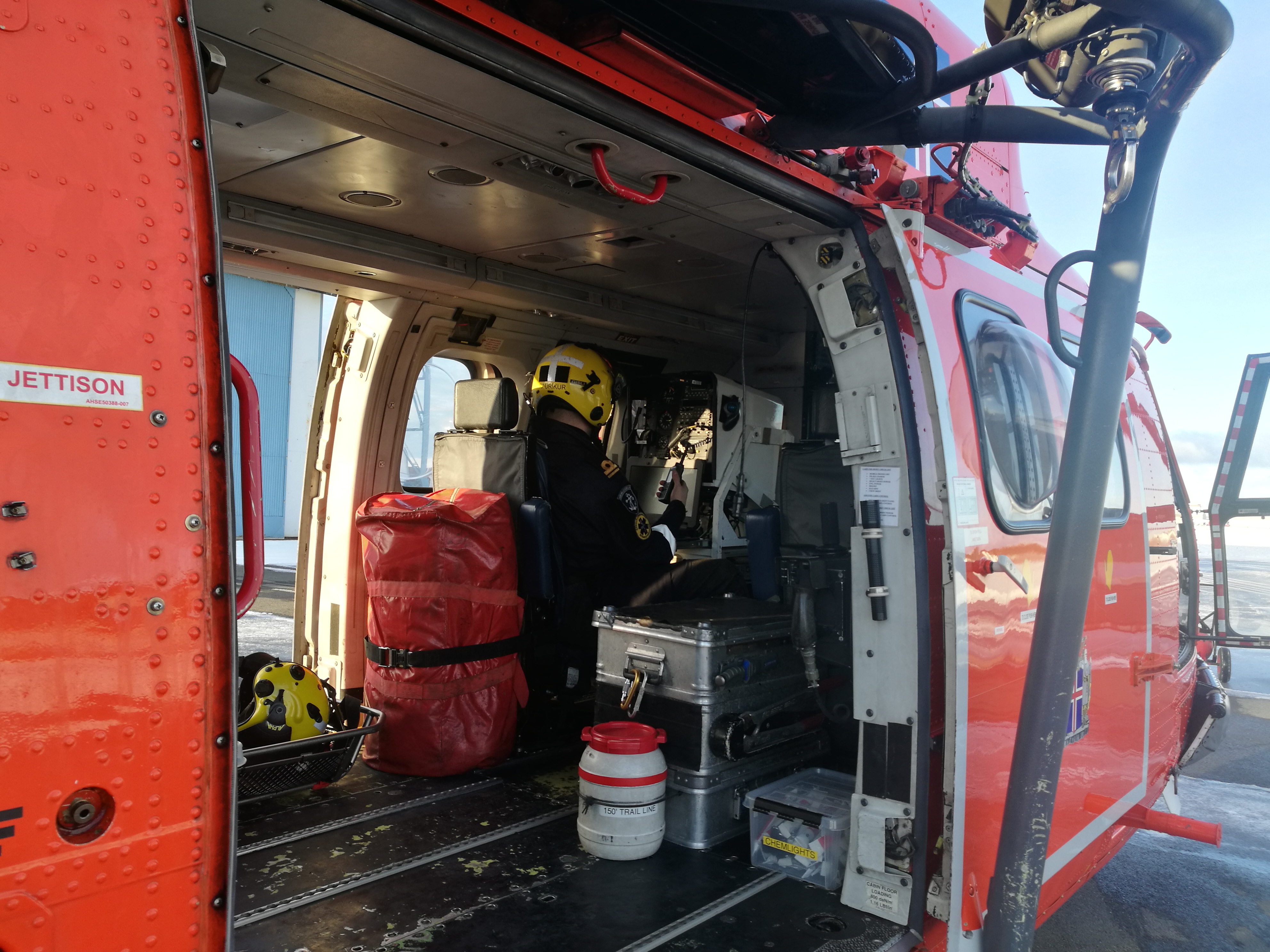
Area of responsibility for ICG spread wider after joining to international duties in terms of collaboration with European Border and Coast Guard Agency FRONTEX. It was founded in 2005 and responsible for guarding borders of EU and Schengen area. All members of the agreement have to make their contribution to it. For ICG it means, their aircraft Bombardier Dash 8 Q300MSA with registration TF-SIF flies to Mediterranean sea. In 2017 it went there for 5 months.
During this period, they performed tasks from FRONTEX operation centre in Greece and Italy. Previous years ICG plane performed similar missions in Spain. Ásgrímsson explained that usually there are four Icelandic crewmembers onboard together with two observers, provided by local authorities. They depart towards the sea, where they fly over special areas, designated by the Operation centre, for example, Crete or Sicily.
Their main goal to find boats possibly smuggling migrants. Secondary tasks look for narcotic smuggling, illegal fisheries, etc. If they come across something else, which looks suspicious, they will report that to a FRONTEX centre.
The main reason, why Iceland do patrols between Europe and Africa, is Schengen agreement. Second is that people in FRONTEX constantly looking for the most effective way to use their budget for such missions.
“The thing is there is a lack of suitable aircraft for this duty. Most patrol aircraft are military. I do not know the exact reason, but they are just not suitable for this type of patrol, and they are expensive. I mean submarine chasers like P-3s or P-8s maybe not very suitable for this type of flying. They flying fast at high altitude, they have a crew of 15 people. We are showing up with a crew of four, and then the home country adds two observers. If you count it for a square nautical mile, it is so much cheaper, than most of these marine type of patrol aircraft. That is why there is a lot of demand for this aircraft”, said Ásgrímur.
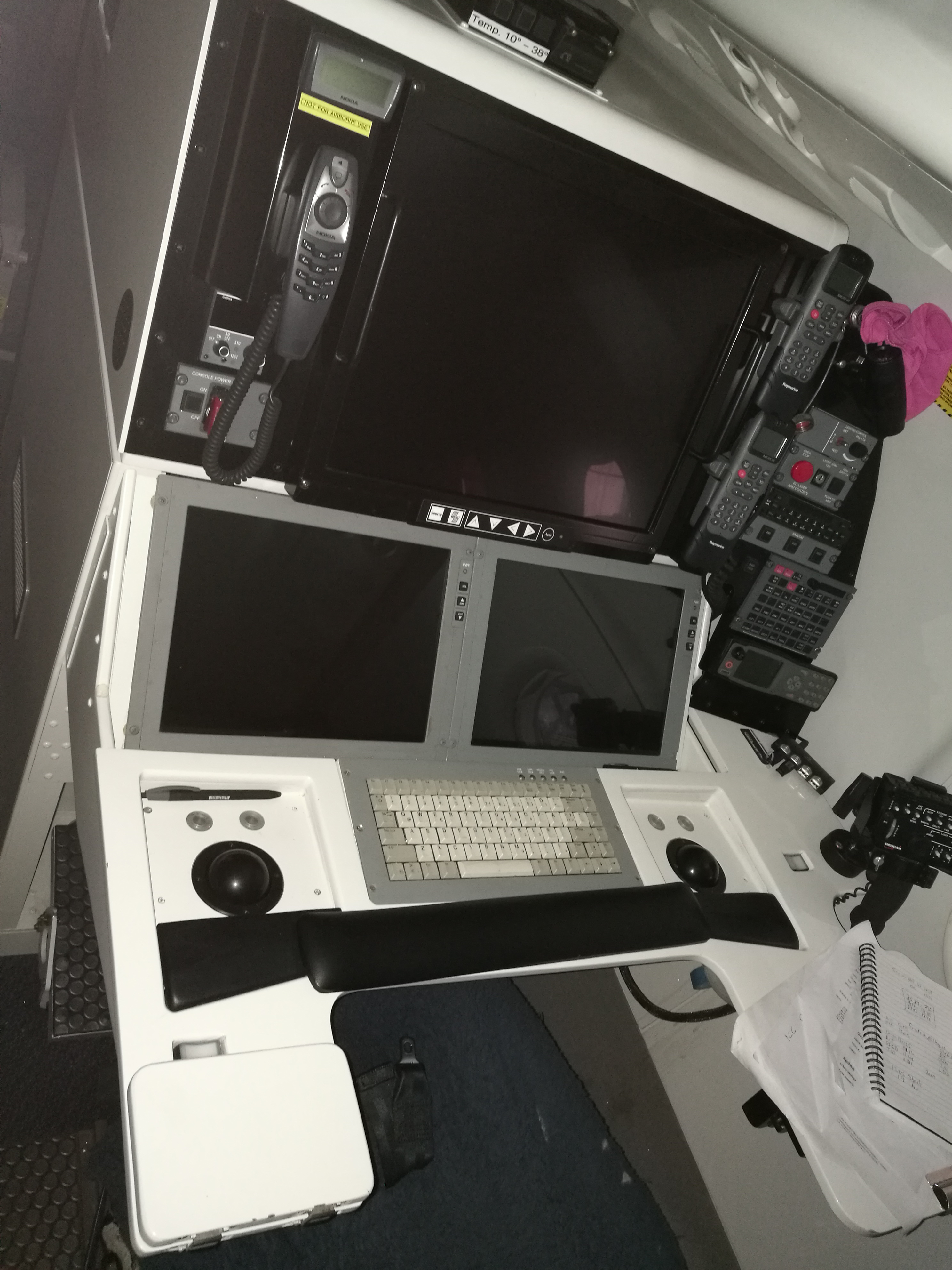
Another side of the coin – Iceland missed its only surveillance aircraft a lot. “If you ask me, I would say I’m suffering terribly. I would want to have this aeroplane just to be able to go out to search if anything happens”, Ásgrímur told. A regular duty of the plane in Iceland is 3-4 patrols during the week. It supposed to go around the island and looking at fishing vessels and what is going on in an economic exclusive zone.
TF-SIF is extremely needed for emergency calls beyond the ground. At night 26. January ICG received Cospas-Sarsat signal. It is an international program dedicated to locate signals from persons, aircraft or vessels in distress and then pass it to the nearby rescue team. Location of the beacon was about 300 nautical miles south-west from Iceland and the signal came only one time.
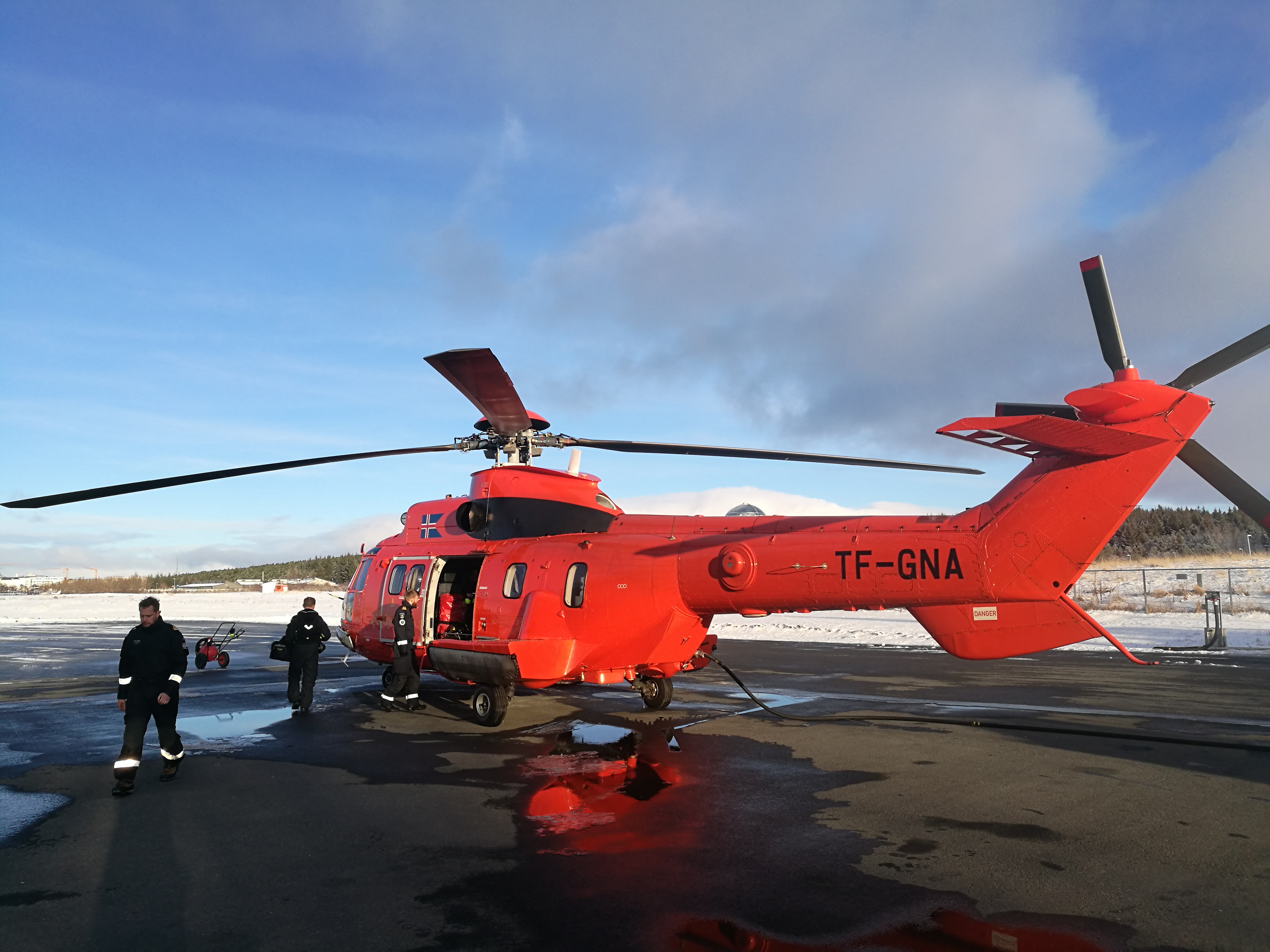
“We were checking in our system, and no ships supposed to be there. But you never know. We found where this beacon was registered. We talked with authorities in that country. They did not recognize this registration. But if we have another hit or aircraft flying would say, “I can hear a beacon”, we will need to go out there, 300 miles”, Ásgrímsson said. In other words, there is no way to be without a plane in such a situation.
There are the only steps to prevent being in such lack of the possibilities to answer an emergency call. “First of all, we should not be so much in the Mediterranean. Of course, it is okay to go there maybe for one month for our contribution to the situation. Then aircraft returns I would like to have more mechanics, who can just do a fast inspection in 2-3 weeks. Means, the aircraft will be able to fly out here right away. In real life, the plane was in the Mediterranean in November and December, then it came back here, and we did not have a crew for a few days. Then the inspection started at the beginning of the year. It takes the whole month of January and February. After it, the plane goes back again to the Mediterranean for March and April. I know that when it comes back in May, pilots will go to simulator training. I hope that it will start to fly missions in Iceland in the middle of May. So, over six months in a year it is unreachable for us”, Ásgrímur Ásgrímsson said.
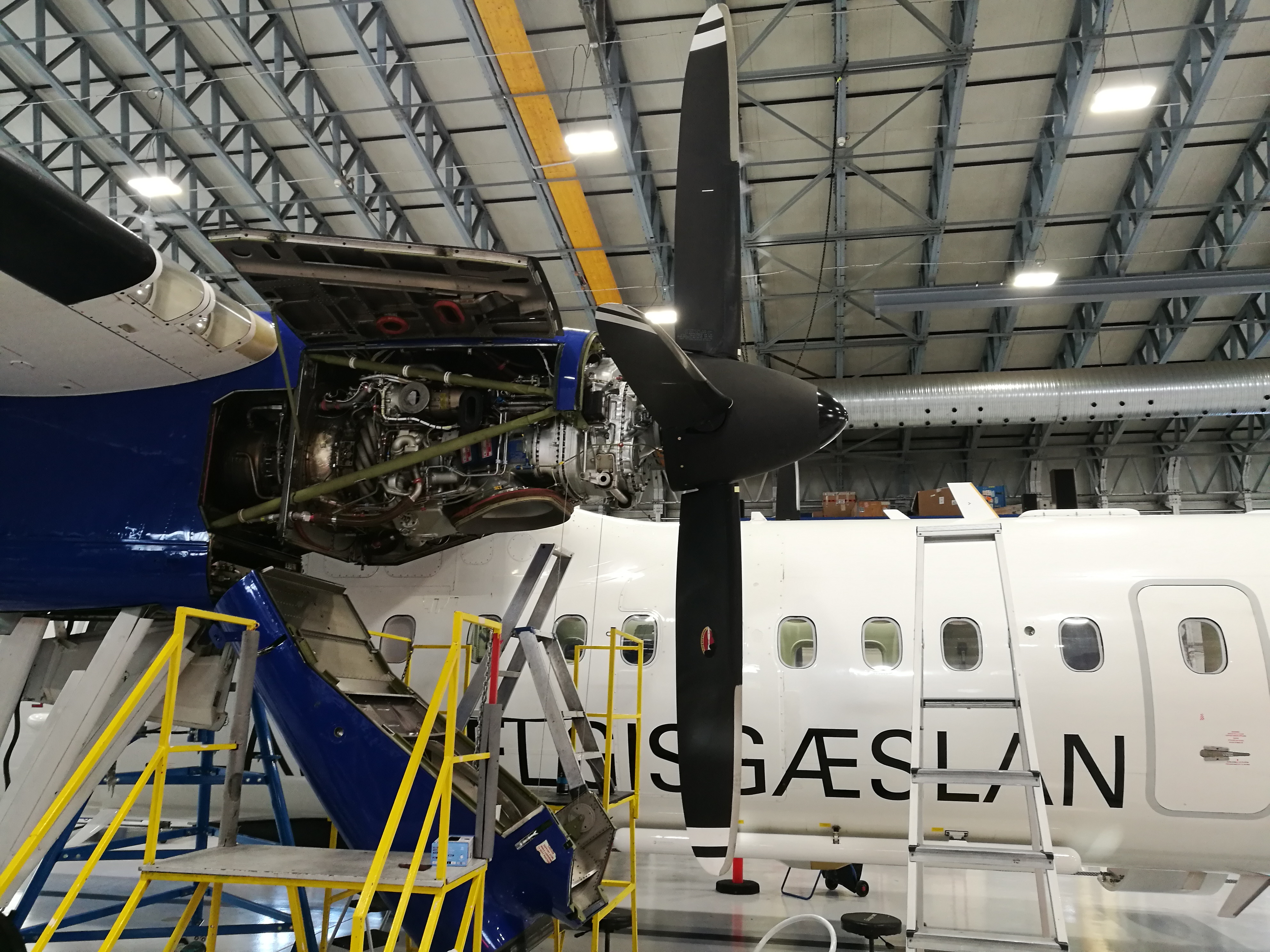
Through “dark routes” around the weather
One of the famous Icelandic TV series “Trapped” (Icelandic “Ófærð”) tells a criminal story of a tiny Icelandic town, which was cut off from the outer world by a heavy blizzard. Several times during the story, characters tried to call Icelandic Coast Guard, but the requests were refused because of the weather. ICG Chief of operations Ásgrímur Ásgrímsson called it fantasy, saying it is very seldom situation when coast guard helicopters cannot reach their destinations.
“Sometimes, of course, there are situations, when we cannot fly straight line across the island. In those cases, pilots can follow the coastline or can go around the weather. For example, when we were going to the east coast to and pick up critically injured or sick people, the helicopters just followed south coast at sea level. Then refuel at Höfn, and continue outside the fjords”, said Ásgrímsson.
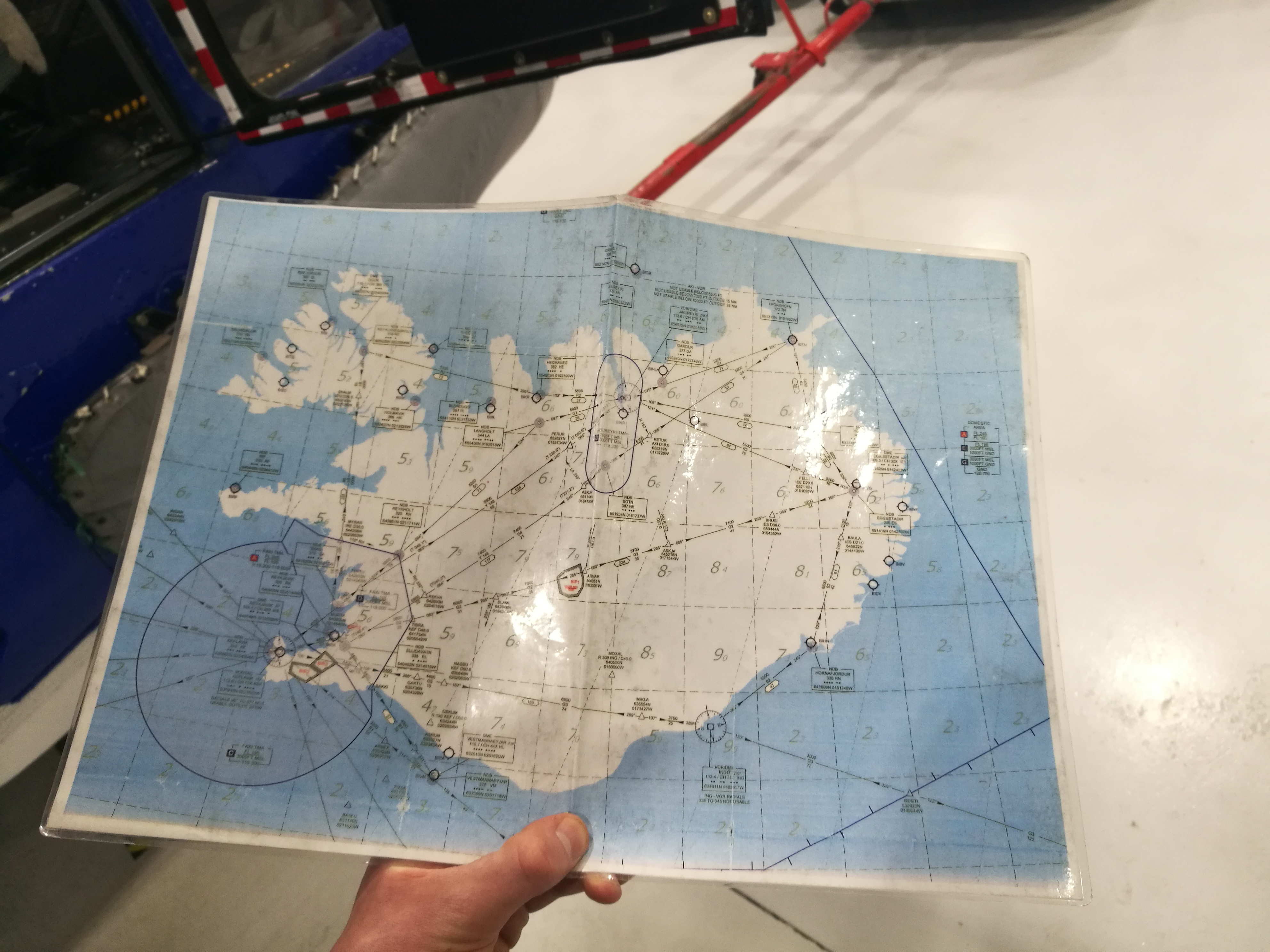
ICG also has so-called “dark routes”, which can be used for saving time. Pilot-in-command of Icelandic Coast Guard helicopter Sigurður Ásgeirsson explained to Flugblogger what is this about.
“Dark routes” are predetermined routes. There are only five or six of them. It was designed for old Dolphin helicopters (Eurocopter AS365 Dolphin had registrations TF-SIF and TF-EIR) we had, which had no de-icing equipment. To avoid icing we had to go around the coast and it took a lot of time. We did some shortcuts through some known valleys and peninsulas at low altitude under clouds, where we could avoid icing. Now we have this Super Puma helicopters with full de-icing capability. We still use “dark routes” sometimes, because they are quite smart routes. However, nowadays we fly it on high levels, not which they were designed for at the beginning. Sometimes we just go IFR. With old Dolphins, we were not able to that because if the icing”, Ásgeirsson said.
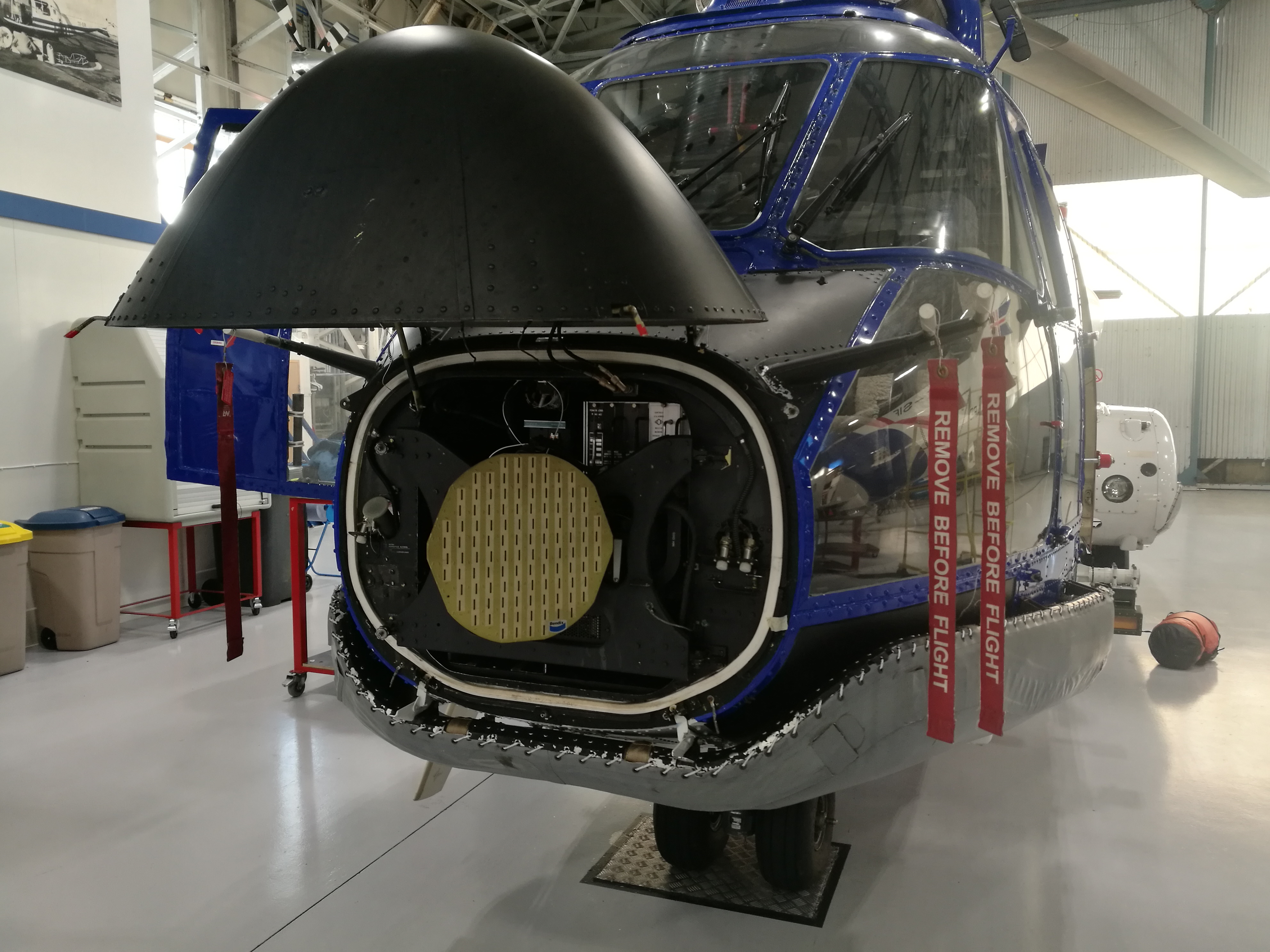
Current ICG helicopters mentioned by Sigurður are Aérospatiale AS.332L1 “Super Puma”. One with registration TF-LIF is owned by Iceland, and other two TF-GNA and TF-SYN are leased from Norway. Index “L1” means it is stretched civil version, with a long fuselage and an airline interior. Its maximum take-off weight is 9,150 kg, and it could carry up to 20 passengers. It is powered by two Turbomeca Makila 1A2 turboshaft engines, which allows cruise speed 133 knots (247 km/h) and 851 km range.
Flugblogger was lucky enough to join Icelandic Coast Guard during one of the training flights to watch the helicopter in action. The crew repeatedly practised hovering in a wild mountain area, putting down a rescue man to the ground with a hoist, and then evacuation “survivals” while hovering above the point. Check our exclusive video to see everything behind ICGs captain’s shoulder.
“Super Puma” is a powerful helicopter for search and rescue operations, however, it is becoming old through the times. At January 2018, Isavia declared they are not going to rebuild ground navigation equipment in small non-international Icelandic airports. Instead of updating current ILS and localizer systems, they are going to implement R-NAV approaches, based on navigation points with prescribed altitudes. And the process has started already, ILS disappeared in Húsavik and Sauðakrokur airports.
The R-NAV approach requires special equipment onboard an aircraft, which allow him to follow a prescribed track through precision connection to GPS satellite. The issue, that ICG helicopters do not equip to this standard. “I think the old system is still operational. As soon as it will be closed or discontinued, there will be difficulties”, said Ásgrímur Ásgrímsson.
Sigurður Ásgeirsson has more details about navigation equipment in the helicopter he piloting “R-NAV? Not really. There is a very old FMS system in two of the helicopters, but one does not have it. There is just a navigation computer with GPS. That is why we are in the face now either upgrading current helicopter or get new ones. Because in another case we will not be able to fly with these systems”.
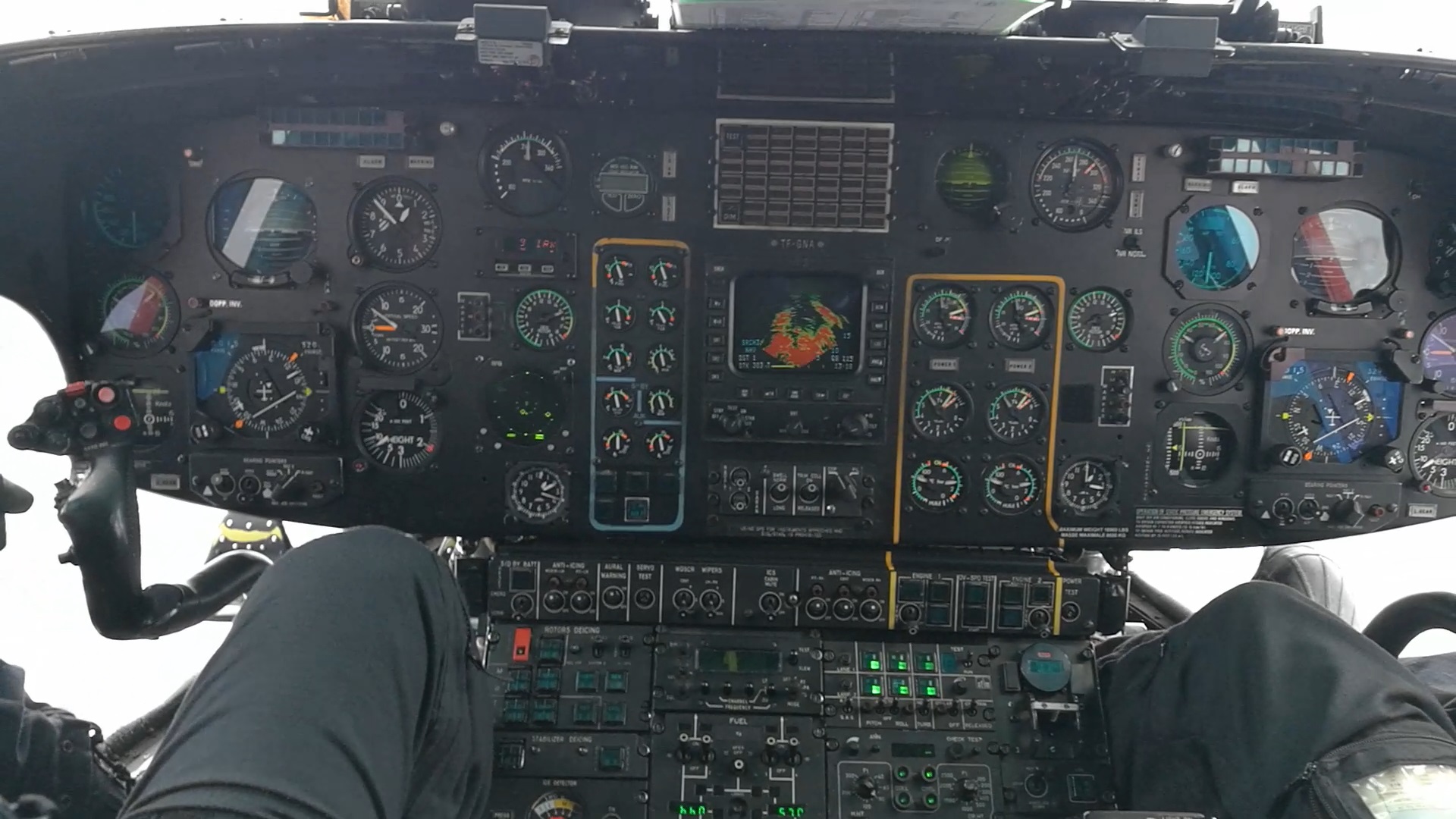
In other words, if the weather will be worse than the minimum for Visual flight rules (visibility 5 km, distance from clouds 1500 m horizontally and 1000 ft vertically), ICG will not be able to land in the airports without ILS or localizers.
New rotor wing
Modern circumstances make ICG upgrade their fleet. Icelandic parliament (in Icelandic “Alþingi”) approved the plan to acquire three new helicopters for Coast guard. It is expected the process of choosing will start at the end of 2018 or the beginning of 2019. The choice has to be made in 2019. The tender is supposed to be finished until the end of 2022.
What new ICG helicopters will be? There are common requirements for them, mentioned in the report of a steering committee on helicopter acquisition for the ICG appointed by the Ministry of Interior. First is about range. These new helicopters supposed to be able to work at least 30 minutes, saving 10 people, in a distance of 235 nautical miles (~435 km) from the landing site.
Navigation equipment for Full IFR, including four-axle autopilot with auto-hover capability. The helicopter must be equipped with the full de-icing system, night vision (NVIS), emergency flotation, dual rescue hoist, facilities for five crew, equipment for taking at least three patients, sling and a thermal camera (FLIR). It is also preferred to have equipment for ship firefighting (HIFR).
In the name of the gods
Tourists usually think that Iceland is the land of fairytales and myths. It is difficult to expect something like that when you are talking about Coast Guards. However, there is something interesting, hidden from the eyes of non-aviation people.
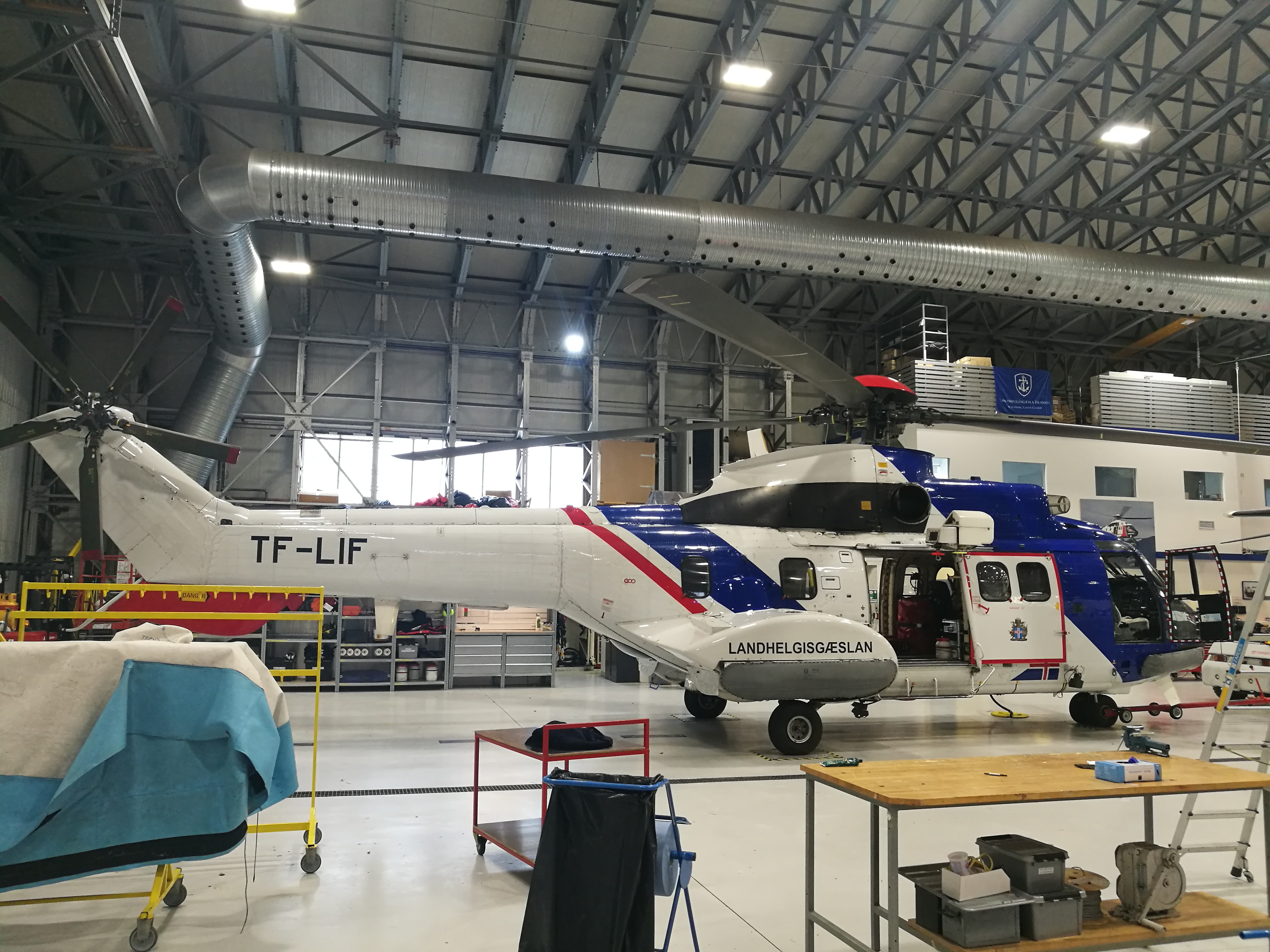
Each aircraft, registered in Europe, has a unique tail number, playing a similar role as car plate. There are five sights, could be filled with digits or letters. First two are predetermined as a national code. For Iceland it’s “TF”, then the last three sights could be filled as the owner wants.
As it was mentioned above, nowadays there are four aircraft in ICG fleet. The plane Bombardier Dash 8 Q300 MSA has registration TF-SIF, and three helicopters Aérospatiale AS.332L1 Super Puma with tails numbers TF-LIF, TF-GNA and TF-SYN. So, Sif, Líf, Gná and Syn – names of four women in Scandinavian mythology.
Sif is the wife of the god Thor and goddess of fertility. “Sif is a goddess of cereal in Nordic mythology, and her pale glittering hair shone on her shoulders like full-grown wheat on a field”, the official website of ICG says. Líf is the name of the woman, survived after Ragnarök, and the same as Old Norse noun means “Life”. Gná is goddess-messenger, who can make her way through the fire and through the air, above the earth and the sea, personifying a light wind. Syn is Old Norse goddess, who defends unauthorized entry into the hall of axes and recommends assemblies against those whom she seems to prove her case with exaggeration and lies.
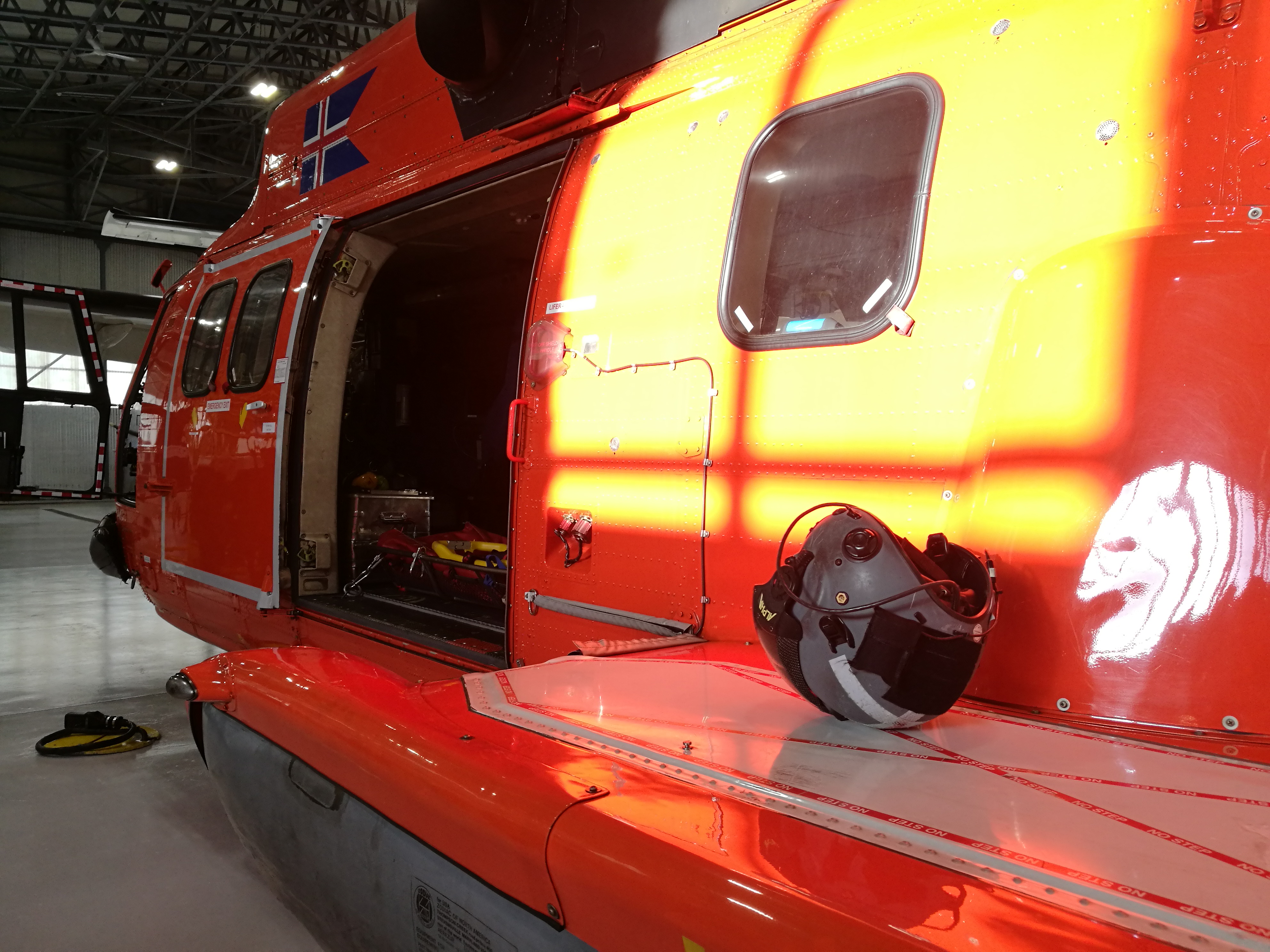
“When Coast Guard was established, the name of the first ship was Thor and the second ship was Odin. It was decided by Coast Guard to use Nordic mythology for naming ships. When aviation division was established, probably, they looked on it and said: “Oh, we can use it for registration numbers”. They have three letters for goddesses”, Ásgrímur Ásgrímsson explained.
He mentioned there were other names from Nordic mythology before. “We had TF-RAN. And Rán was one of the gods from Viking mythology. We had Kná, who was one of the goddesses. We also had registration Gró, that might be one of the goddesses”, Ásgrímsson said.


